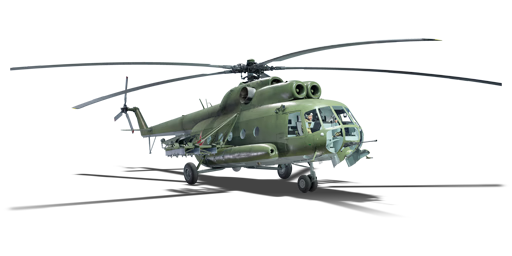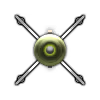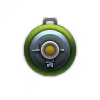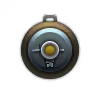



Following the success of the Mi-6 heavy transport helicopter and its usage of turbine engines, Mikhail Mil set out to create a medium attack-transport utility helicopter with turbine engines to replace the aging Mi-4. While the Soviet government was sceptical at first to an entirely new helicopter to replace the Mi-4 (which they were content with), Mil convinced them by claiming his new helicopter would simply be a turbine-powered variant of the Mi-4. Using this excuse, he was able to completely redesign the front half of the helicopter (where the piston engine of the Mi-4 was housed). The Soviet government was still very sceptical about a new turbine-powered transport helicopter, but that all changed when in September 1959, when Nikita Khrushchev during his visit to the USA, took a flight in the S-58 presidential helicopter (Marine One) for the first time and was reportedly extremely impressed. On Khrushchev's return, he ordered the creation of a similar turbine-powered helicopter, which was to be ready for the return visit by the American president, to save face. This gave Mil the power under the orders of Kruschev to build the twin-turbine medium transport helicopter he had originally envisioned. Shortly after, the first prototype of "Mil V-8" helicopter would begin testing. The new helicopter was instantly a hit, entering service with civilian and military operators around the world. Shortly after, a specially armed variant was derived for the Red Army, the Mi-8TV (Transportnyy Vooruzhennyy; "transport, armed"), equipped with rocket pods and ATGMs for troop support.
The Mi-8TV(NATO reporting name: Hip), introduced in Update "Sons of Attila", is a early member of the venerable Mi-8 family. The Mi-8 functions as a major upgrade to the previous Mi-4AV, and a decent sidegrade to the early Mi-24A. Armed with a decent load of ATGMs, rockets, bombs, and even incendiary bombs (something rarely found on helicopters in-game), the Mi-8TV is a force to be reckoned with when positioned correctly in combined battles. Players must be wary of its manoeuvrability: while it is indeed a major upgrade in flight performance over the Mi-4AV thanks to its lighter and far stronger turbine engines, it is no AH-1 Cobra and is still a large target which is easy to hit. Players must exercise caution when engaging ground targets with the Mi-8, as its large profile makes it easy pickings for SPAA at closer ranges.
| Belt | Belt filling | Armor penetration (mm) at a distance: | |||||
|---|---|---|---|---|---|---|---|
| 10 m | 100 m | 500 m | 1000 m | 1500 m | 2000 m | ||
| AP-I/API-T/AP-I | 29 | 27 | 20 | 13 | 9 | 6 | |
| AP-I/AP-I/IAI/API-T | 29 | 27 | 20 | 13 | 9 | 6 | |
| IAI/AP/API-T/AP | 31 | 30 | 22 | 16 | 11 | 8 | |
| IAI/API-T/IAI/IAI | 29 | 27 | 20 | 13 | 9 | 6 | |
| Name | Weight | Slot | ||||||||||
|---|---|---|---|---|---|---|---|---|---|---|---|---|
| 31.5 kg |  |  |  |  | ||||||||
| 16 × | 110.2 kg |  |  |  |  |  |  | |||||
| 32 × | 225.5 kg |  |  |  |  |  |  | |||||
| 114 kg |  |  |  |  |  |  | ||||||
| 250 kg |  |  |  |  |  |  | ||||||
| 227 kg |  |  |  |  |  |  | ||||||
| 478 kg |  |  | ||||||||||
| 508.3 kg |  |  | ||||||||||
| 374 kg |  |  | ||||||||||












Flight performance | |
|---|---|
Survivability |
|---|
Weaponry | ||
|---|---|---|